Instruments Tenor saxophone Parents Bobbie Lee, Rodd Keith | Name Ellery Eskelin | |
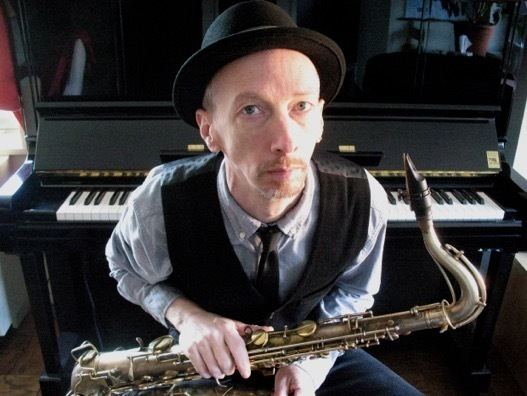 | ||
Role Musician · home.earthlink.net/~eskelin Albums Solo Live at Snugs, September Trio Similar People Profiles | ||
Ellery eskelin gary versace after you ve gone
Ellery Eskelin (born August 16, 1959) is an American tenor saxophonist, born in Wichita, Kansas, and raised in Baltimore, Maryland, from the age of two. His parents, Rodd Keith and Bobbie Lee, were both professional musicians. Rodd Keith died in 1974 in Los Angeles, California, and became a cult figure after his death in the little-known field of "song-poem" music. Organist Bobbie Lee performed in local nightclubs in Baltimore in the early 1960s and provided Eskelin an introduction to standards from the Great American Songbook as well as inspiring an early interest in jazz music.
Contents
- Ellery eskelin gary versace after you ve gone
- Ellery eskelin w drew gress gerald cleaver
- Early years
- 1980s
- 1990s
- 2000s
- 2010present
- As Leader
- As a Sideman
- Filmography
- References
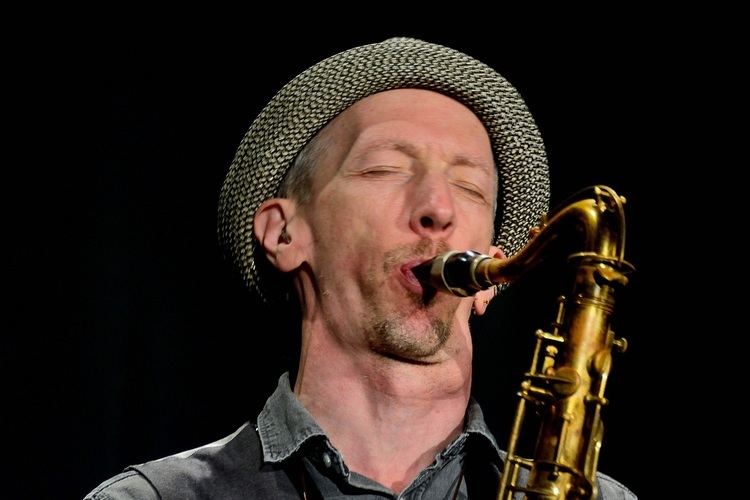
Eskelin has resided in New York City since 1983 and has led numerous international touring ensembles while participating as a sideman or collaborator with many of today's most forward-thinking composers and improvisers. He has released more than twenty-five recordings as a leader since the late 1980s, primarily for the Swiss hatOLOGY label. His most important work continues to be with the group he formed in 1994 featuring keyboardist Andrea Parkins and drummer Jim Black although he has maintained lasting musical associations with Joey Baron, Mark Helias, Gerry Hemingway, Marc Ribot, David Liebman, Han Bennink, Sylvie Courvoisier, Bobby Previte and Daniel Humair among others.
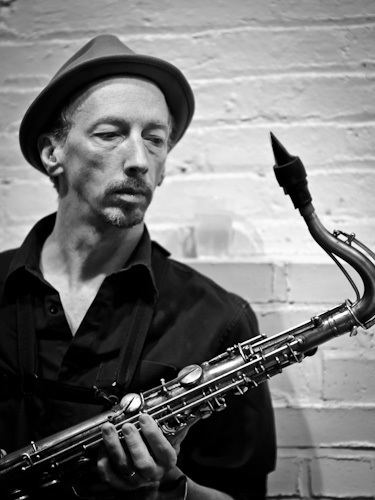
Eskelin's style has its roots in the jazz realm yet his unique phrasing (which is compared to Arnold Schoenberg's technique of "klangfarbenmelodie" in The Wire, December 1996) and the unorthodox techniques utilized in his compositions (in which composed and improvised elements often collide unpredictably) make for a music that defies easy categorization. Over the years, Eskelin has garnered significant critical praise in the international jazz press. 'Down Beat magazine has recognized him as "a major player in today's creative music" (September 1995) and described his compositional approach as "a startlingly new concept" (January 1997).

Ellery eskelin w drew gress gerald cleaver
Early years
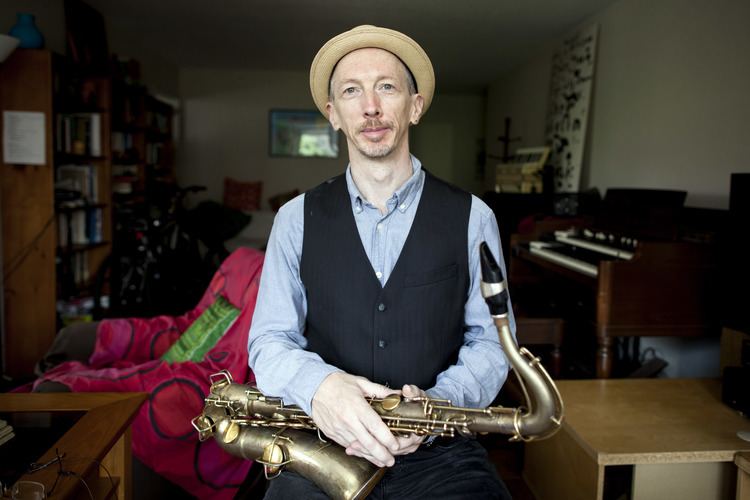
Ellery Eskelin began playing tenor saxophone in 1969 at the age of ten. In interviews he claims his early influences as Gene Ammons, Sonny Stitt, Lee Konitz, Stan Getz and John Coltrane. His mother, organist Bobbie Lee, learned to play music in the Pentecostal church as a teenager, the influence of which carried over into her playing of secular music and also provided a strong and lasting influence on Eskelin. Her playing was characterized by a strong rhythmic feel and a commanding delivery of American songs. Eskelin's grandfather was the musical director of the church and played the pedal steel guitar in services while performing on the electric guitar professionally in Baltimore during the late 1940s and early 1950s.
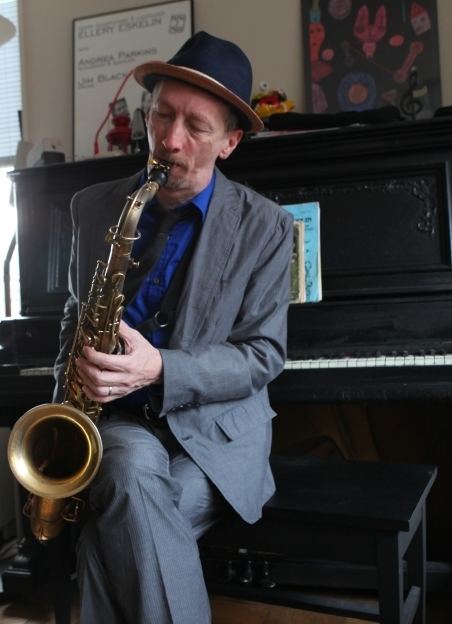
Baltimore had a rich musical legacy sustained by musicians such as saxophonists Mickey Fields and Gary Bartz. Musicians from New York often passed through Baltimore to perform on the weekly Sunday afternoon Left Bank Jazz Society concert series presented at the Famous Ballroom. Eskelin had opportunities to sit in with locals such as Fields as well as internationally renowned artists such as Bartz, Pepper Adams and Woody Shaw. Early performances as a leader took place at various jazz clubs such as "The Bandstand" and "The Closet" run by saxophonist and entrepreneur Henry Baker, who had a long history in the Baltimore music scene having known Lester Young, Cannonball Adderley, Miles Davis, Red Garland, John Coltrane, Clifford Brown and many others. Baker predicted that the young saxophonist would one day become "a great tenor saxophone player". At around this same time Eskelin met drummer Harold White (formerly with Horace Silver) and began performing regularly in White's quintet along with trumpeter Tom Williams.
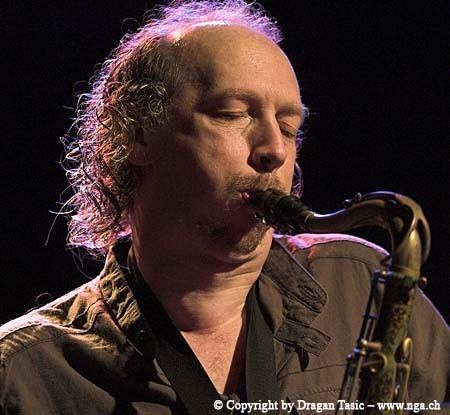
Eskelin attended Towson University where he studied classical saxophone with Joseph Briscuso and performed in composer Hank Levy's Jazz Ensemble which played Levy's "odd-meter" big band compositions exclusively. Bassist Drew Gress was a fellow student with whom Eskelin continues to collaborate and perform with to the present day. In 1979 Eskelin met pianist Marc Copland and joined Copland's band for engagements in Washington D.C. including the Cellar Door, Blues Alley and the One Step Down. Copland was a former New York saxophonist who moved to Washington DC and switched to piano in order to more deeply explore the role of harmony in his own music. Eskelin, along with Drew Gress, would reunite with Copland years later in New York City in one of Eskelin's early groups as a leader. Also in 1979 Eskelin encountered bay area saxophonist Mel Ellison who was performing in Baltimore for an extended engagement with trumpeter Ted Curson's group. Eskelin took an informal lesson with Ellison, who's unique style made a lasting impression. Also in this group was drummer Tom Rainey, who in subsequent years Eskelin would tour and record with as part of bassist Mark Helias' ensemble.
1980s
From late 1981 until early 1983 Eskelin toured with swing-era trombonist Buddy Morrow in a big band setting performing one-nighters across the United States and culminating in a tour of South America in early 1983. In March 1983 he left the road tour and moved to New York City taking any kind of musical work available in order to make a living. In an effort to deepen his understanding of be-bop Eskelin attended nightly informal jam sessions for several years at a local club called the "Star Cafe" on 23rd Street and Seventh Avenue in Manhattan. These sessions were run by saxophonist Junior Cook and drummer Harold White (who Eskelin had first met and performed with in Baltimore). In addition Eskelin pursued private studies with saxophonist George Coleman. During the summer of 1984 Eskelin joined organist Jack McDuff's band (which featured guitarist Dave Stryker and legendary drummer Joe Dukes) on a regular engagement at Dudes Lounge in Harlem.
By 1985 Eskelin slowly began to develop his own musical approach, combining his roots in jazz with his interests in other forms of music, particularly free improvisation. Laying the groundwork for these explorations were studies with saxophonist David Liebman which led to informal jam sessions and eventually a working professional relationship. In 1987 Eskelin began developing original music with drummer Phil Haynes leading to the formation of the cooperative group "Joint Venture" (with trumpeter Paul Smoker and bassist Drew Gress) as well as numerous other projects centered around Haynes' Brooklyn loft and rehearsal space. Along with a group of like-minded musicians they presented a number of annual self-produced festivals in Manhattan at the Knitting Factory which ran into the early 1990s. These performances and subsequent recordings by these groups led to Eskelin's initial exposure on the European touring circuit.
1990s
Eskelin began touring Europe regularly with drummer Joey Baron's group "Baron Down", a trio including Baron, Eskelin and trombonist Steve Swell (and later trombonist Josh Roseman). Baron Down released three recordings: Tongue in Groove (1991), Raised Pleasure Dot (1993) and Crack Shot (1996). At this time Eskelin abandoned commercially oriented work in order to concentrate fully on his own projects and the music of like-minded colleagues. During a three-month period in 1991 he developed a solo saxophone concert program in complete musical isolation, opting not to perform or interact with any other musicians during this time. In addition to entirely revamping his approach to the saxophone the process proved to be a catalyst for musical ideas that Eskelin further developed and applied to his compositions for the group he formed in 1994, "Ellery Eskelin with Andrea Parkins and Jim Black". This group, featuring Parkins on accordion and electronics and Black on percussion released "Jazz Trash" in 1995 and followed up with a dozen recordings over the ensuing decade and into the 2000s primarily for the Swiss-based Hat Hut label. In the liner notes to "One Great Day..." (the band's second release) Eskelin explains that the fractured and sometimes incongruent nature of his experiences as a musician coming up in the 1970s and 1980s finally came together in a manner that made sense and could be expressed in a unified musical language with this ensemble. The group toured regularly in Europe, the U.S. and Canada and continues, having performed in Europe as recently as 2010.
One of Eskelin's most acclaimed recordings in the 1990s was "The Sun Died" a project based upon music by (and associated with) saxophonist Gene Ammons. The format was unusual, utilizing saxophone, guitar (Marc Ribot) and drums (Kenny Wolleson). The New York Times characterized The Sun Died as "a remarkable record" and chose it as one of the Top 10 Recordings of 1996.
2000s
Throughout the first decade of the 2000s Eskelin focused primarily on his group with Andrea Parkins and Jim Black, touring and recording, occasionally augmenting the band with additional musicians such as vocalist Jessica Constable, keyboardist Philippe Gelda, cellist Erik Friedlander, tubist Joseph Daley, guitarist Marc Ribot and bassist Melvin Gibbs. Additionally, Eskelin continued to maintain long-time musical relationships established in the 1990s, touring and recording with bassist Mark Helias (recordings include Open Loose, Fictionary, Loopin' the Cool), drummer Gerry Hemingway ("Johnny's Corner Song", "Devil's Paradise", "Songs", "The Whimbler", "Riptide"), drummer Han Bennink ("Dissonant Characters"), drummer Bobby Previte ("Set the Alarm for Monday") and drummer Daniel Humair (Liberté Surveilé). Eskelin also forged new ties with musicians from around the globe such as oud player Rabih Abou-Khalil, pianist Satoko Fujii, trumpeter Dennis González, clarinetist Ben Goldberg, bassist Lisle Ellis, pianist Erik Deutsch and drummer John Hollenbeck. Eskelin also made a guest artist appearance on the BBC Electric Proms Festival in London with the Basquiat Strings in 2007. In 2009 Eskelin was the recipient of a Chamber Music America "New Jazz Works" grant which commissioned an extended work for the group "Different But the Same", a quartet with fellow saxophonist David Liebman.
During this time Eskelin also continued launching new projects of his own (leaning towards complete improvisation) such as "Vanishing Point", a group-improvised recording from 2000 with Mat Maneri (viola), Erik Friedlander (cello), Mark Dresser (bass) and Matt Moran (vibraphone). An improvising trio of cellist Vincent Courtois, pianist Sylvie Courvoisier and Eskelin was formed in 2002 and recorded "As Soon as Possible" in 2008.
2010–present
In 2011 Eskelin formed his current working ensemble, Trio New York, with Hammond B3 organist Gary Versace and drummer Gerald Cleaver. A renewed interest in the early history of the saxophone (sparked by his switch to a vintage instrument in 2009) has invigorated Eskelin's musical aesthetic. Trio New York incorporates standard material from the Great American Songbook (much of the repertoire being inspired by his mother, organist Bobbie Lee) in a freely improvised setting. In comparing the group's eponymous recording to an earlier project by Eskelin devoted to the music of saxophonist Gene Ammons (The Sun Died, 1996), reviewer Ed Hazel wrote: "If anything, Trio New York is both subtler and more adventurous, more at home with the music and less self conscious about taking liberties with it." The group has released three recordings, Trio New York, Trio New York II and Trio Willisau Live, this most recent release being a live recording from the Willisau Festival in 2015 and featuring Gerry Hemingway on the drums. The UK based Wire Magazine wrote of this project, “There’s a whole history of jazz in these richly rewarding performances.”
In 2013 Eskelin released a new recorded project for clean feed records entitled Mirage, improvisations with Susan Alcorn (pedal steel guitar) and Michael Formanek (double bass). Eskelin remarked that he was interested in exploring the "expressive range of the saxophone that is perhaps most associated with its beginnings" and that his objective is to "bring that type of lyricism to the language of contemporary improvised music." Continuing with this idea, in the liner notes to his 2015 release Solo Live at Snugs on hatOLOGY records, Eskelin discusses a revamped approach to solo saxophone performance, updating his 1992 release Premonition - Solo Tenor Saxophone in which he compares the two projects by saying “As opposed to reimagining my instrument I’m very much interested in the essence of a saxophone as being just what it is, a saxophone.” Going even further, Eskelin was interviewed by the web based music journal “Point of Departure” in 2016 in which he conveyed his increasing advocacy of acoustic (non-amplified) performance in humanistic, if not spiritual terms. One such project that adheres to this aesthetic was released on the Swiss Intakt label in 2017, titled “Sensations of Tone” with bassist Christian Weber (from Zürich) and Michael Griener on drums (based in Berlin). This trio alternates freely improvised music with early jazz classics by composers such as Jelly Roll Morton and Fats Waller. The group performs acoustically (with bassist Weber opting not to use an amplifier). In this same interview Eskelin also expresses concern about the effect of technology on the artistic experience (for both performers and audience) as well as the potential for the disruption of personal and community engagement.
